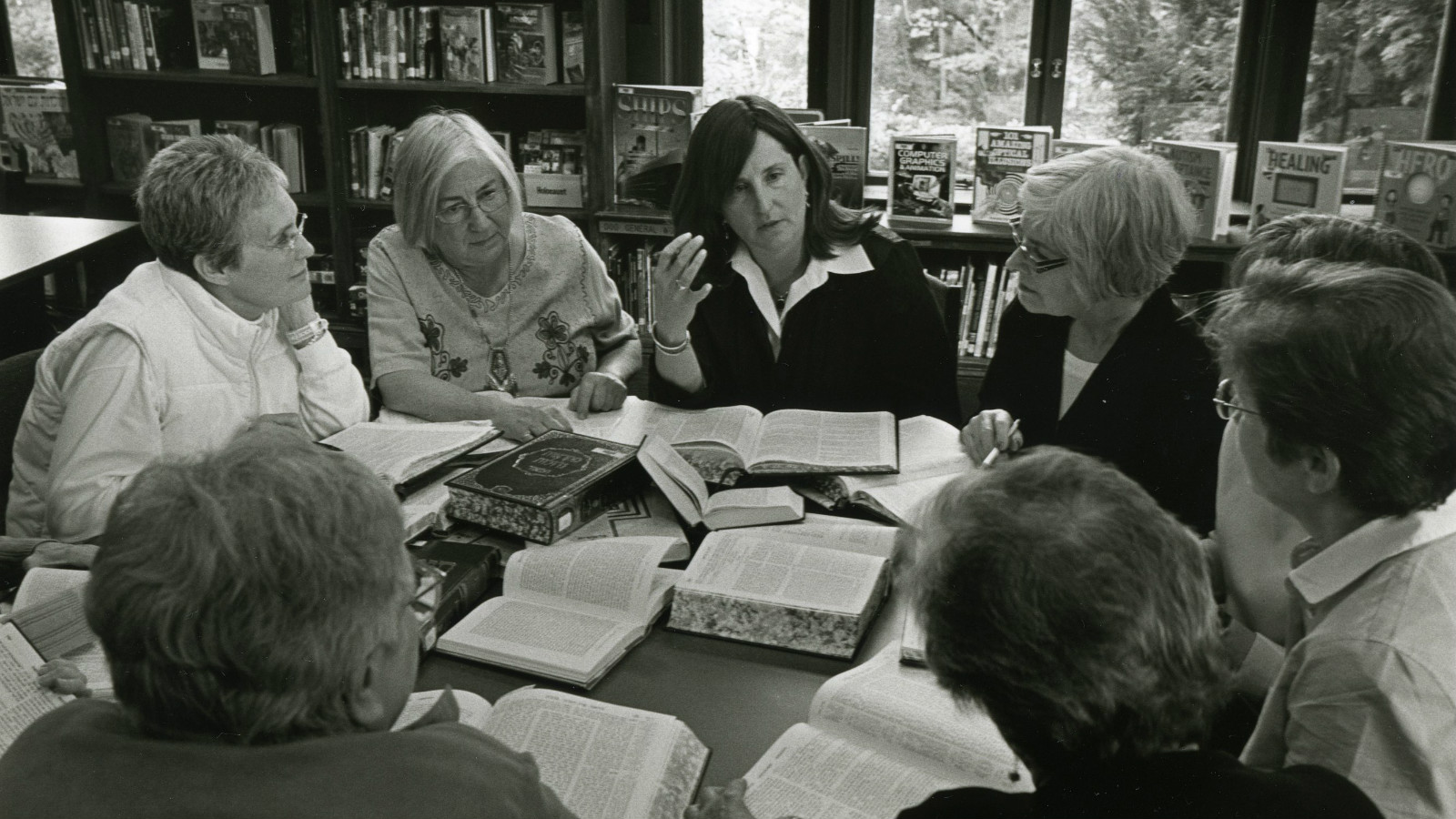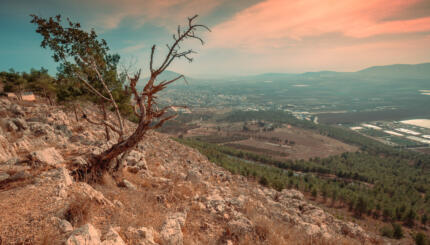The period of the aharonim (“later” or “last” scholars) is often said to begin with the Shulhan Arukh of R. Yosef Caro, published in 1565, later supplemented by the glosses of R. Moshe Isserles (Rema) in 1578.
Halachic authorities and historians identify this point as significant for several reasons. It bridges a period of historical turmoil: the Spanish Inquisition in 1492, the Chielmnicki Pogroms of 1648-49, and the beginning of the Enlightenment in Europe. Against this backdrop fraught with physical relocation and intellectual upheaval, an authoritative code of behavior was an appealing anchor to tradition. Retroactively, as the legal authority of the Shulhan Arukh gained weight in halachic discourse, its publication gained significance as a halachic turning point as well.
The Shulhan Arukh‘s Rise to Primacy
Following its publication, the Shulhan Arukh met with resistance, for a variety of reasons. Some opposed its brevity and omission of sources, while others preferred that halachic decision-making be made on the basis of a thorough, independent reading of the Talmud and early authorities.
A competing code, Levush Malkhut, was produced by R. Mordechai Jaffe (1530-1612), initially in response to the unwieldy length of Caro’s first major legal work, the Bet Yosef, then in response to the brevity of the Shulhan Arukh and its choice to ignore Ashkenazic rulings, and finally as an elaboration on the brief glosses of the Rema. Some of the core differences between the Shulhan Arukh and the Levush are illustrated in this example:
With your help, My Jewish Learning can provide endless opportunities for learning, connection and discovery.
Shulhan Arukh‘s introduction to the laws of tzitzit (fringes) reads: “A person should enwrap in tzitzit and bless standing.”
The parallel section in the Levush reads:
Immediately after washing the hands, a person should enwrap in tzitzit, as is written: ‘Make for yourselves strings upon the four corners of your garment which covers you.’ As one begins to wrap, beforehand one should bless upon them ‘le-hitateif be-tzitzit (to wrap in tzitzit),’ because for every mitzvah someone does, he should give thanks and praise to God who gave it to us and causes us to merit through it, to receive by it the greatest wholeness in this world and the next world. And the Sages enacted blessing oveir le-assiyatan, that is, before doing it, meaning that the blessing passes before the doing of [the mitzvah].
The formulations of the Shulhan Arukh are terse as compared to the lengthier explanations of the Levush, which include biblical sources, the exact order of the ritual, as well as legal and theological rationales for the blessing. Despite this, or perhaps partly because of it, the Shulhan Arukh was to prevail.
Commentaries and Supercommentaries
One can attribute much of the Shulhan Arukh‘s success to its primary commentaries:
R. David ben Samuel ha-Levi (1586-1667, Poland) produced the Turei Zahav, commonly known by its initials as the Taz, a commentary to all four parts of the Shulhan Arukh. The commentary of the Taz to Yoreh De`ah most closely follows the Shulhan Arukh, whereas the commentary to the other sections often follows the Tur.
R. Shabbetai ben Meir ha-Kohen (1621-1662, Lithuania and Poland), wrote Siftei Kohen (Shakh), a commentary to Yoreh De`ah and Hoshen Mishpat.
R. Avraham Abele ben Hayyim ha-Levi Gombiner (1637-1683, Poland and Lithuania) wrote Magen Avraham, a commentary to Orah Hayyim.
The appearance of these commentaries led to the composition of supercommentaries (commentaries to commentaries). Of the latter, the most famous and influential was written by R. Yosef ben Meir Teomim (1727-1792). His Pri Megadim was divided into three parts: the Mishbetzot Zahav (a commentary on the Taz), the Eshel Avraham (a commentary on the Magen Avraham), and Siftei Da’at (a commentary on the Shakh). Many more interrelated commentaries may be seen on a page of the standard printed editions of the Shulhan Arukh.
Women and Tzitzit
How do these texts interact with each other? Let’s return to the laws of tzitzit for an example:
The Shulhan Arukh (Orah Hayyim 14:1) invalidates tzitzit that are made by non-Jews, but explicitly permits women to make tzitzit, even though women are exempted from wearing tzitzit. The Rema adds that it is preferable for tzitzit to be made by men.
The Taz notes that the Shulhan Arukh disagrees with Rabbenu Tam, an early medieval French scholar, who invalidates tzitzit made by women based on an analogy to tefillin (phylacteries), which women are exempt from wearing and therefore ineligible to make. The Taz then vindicates his contemporary situation in which women spun the wool for tzitzit. According to the Taz, even Rabbenu Tam would permit this, since there is a difference between tying tzitzit onto a garment and spinning the wool for tzitzit.
By contrast, the Magen Avraham favors Rema‘s opinion. Magen Avraham points out that in general the phrase “children of Israel” is interpreted as referring to “sons” and not “daughters,” and that the Talmud’s interpretation in our case, in which “children of Israel” is used to exclude non-Jews but includes Jewish women by implication, is abnormal.
This example captures several elements characteristic of the aharonim‘s halachic activity. Both the Taz and the Magen Avraham offer the legal and precedential background for the Shulhan Arukh and Rema, including rejected opinions. The Taz attempts to justify his contemporary practice according to a strict opinion. Both indicate their final preference.
The Pri Megadim attempts to shore up the Taz‘s unproven assertion that even Rabbenu Tam would agree that women could spin wool for tzitzit, implicitly against the critique of the Magen Avraham. He makes two attempts to justify the Taz‘s opinion that women may spin. First, he points out that in an earlier section of the Shulhan Arukh (11:1-2) which discusses spinning, the Rema, who would ordinarily bring the Ashkenazic opinion represented by Rabbenu Tam, is silent, thus implying that indeed Rabbenu Tam would agree that women may spin the wool for tzitzit.
His second justification is more complicated, relying on a distinction between two possible ways to exclude women from making tzitzit:
(1) Interpreting the phrase “children of Israel” as “sons” and not “daughters”
(2) The principle that being exempt from a mitzvah disqualifies one from being able to make items related to it.
Pri Megadim notes that the Levush follows the first opinion, and allows women to spin because this phrase (“children of Israel”) appears in the verse about tying, but not in reference to spinning. Rabbenu Tam, however, seems to agree with the second reason, and therefore thinks that women are excluded from any step in the process of making tzitzit.
Here we see some elements of the Pri Megadim‘s halakhic strategy. He bolsters the Taz‘s case by incorporating the opinion of the Levush. In the process he clarifies the two main opinions underlying the law, gives some practical differences between them, and even ends up with a possibility that contradicts the Taz. He concludes that this matter requires further thought.
Responsa Literature
Responsa literature (she’elot u-teshuvot, or shu”t) as a genre is notable for the way it confronts challenges posed by new realities and behaviors, as well as its development of new theoretical halachic argumentation. Some of the greatest aharonim are known primarily through their responsa. They include:
Hakham Tzevi, R. Zevi Hirsch ben Jacob Ashkenazi (1660-1718, Moravia, Berlin, Altona, Amsterdam). One of his famous responsa addresses whether a golem can count in a minyan; another involves observance of yom tov by travelers to Israel. His most controversial teshuvot–which were attacked by his colleagues–declare a chicken born without a heart to be kosher.
Sha’agat Aryeh, R. Aryeh Leib Gunzberg (1695-1785, Lithuania, Minsk, Volozhin, Metz). Several of the issues he addresses involve the status of various halachot in contemporary times (bi-zeman ha-zeh), including the mitzvah of writing a Torah scroll, circumcision of Muslims by Jews, and rejoicing on holidays.
She’elat Yavetz, R. Yaakov ben Zevi Emden (1697-1776, son and student of Hakham Tzevi, Altona, Moravia). Unlike many rabbis of his time, he was learned in many secular disciplines. He is noted for his unusual halachic positions, including permitting concubinage.
Noda bi-Yehudah, R. Ezekiel ben Yehudah Landau (1713-1793, Poland and Prague). Among the contemporary issues he addressed in his halachic writings were autopsies and shaving during hol ha-mo`ed (the intermediary days of Passover and Sukkot).
R. Akiva ben Moses Guens Eiger (1761-1837, Eisenstadt, Lissa, Posen). He confronted issues resulting from interaction with the growing Reform community, and, among other works, wrote glosses to the Shulhan Arukh and the Talmud.
Responsa literature in this period deals with a full array of halachic matters, both practical and theoretical. Evidently, the presence of the Shulhan Arukh did not end halachic discussion or innovation.
The Vilna Gaon
The prolific writings and intellectual prowess of one particular figure served to transition from one generation to the next–R. Elijah ben Solomon Zalman (1720-1797), known as the Vilna Gaon (Gr”a). The Vilna Gaon took extremely strong stands on the issues of his day, particularly in opposition to Hasidism. As a scholar, he studied all the secular sciences which he felt necessary to understand halacha, including astronomy, mathematics, and geography.
The Vilna Gaon is often compared to a rishon, because he made halachic decisions independently, relying on readings of the Talmud. His methodology rested upon establishing correct readings of texts and determining the precise sources of halachot; Be’ur ha-Gra, his commentary to the Shulhan Arukh, is extraordinarily terse, noting sources and offering only the barest of explanations. Through his few students, and their establishment of the prestigious Volozhin yeshiva, the Vilna Gaon’s influence continued to be felt throughout the 19th century.
By the mid-19th century, Ashkenazic lands were embroiled in the controversies accompanying the challenges of emancipation and the attendant rise of Jewish denominations. Jewish legal scholars began to split into various camps, some allying themselves with the new movements in order to provide them with legitimacy, others offering measured opposition, and yet others offering more extreme opposition, resulting in more stringent halachic attitudes and positions than had heretofore been expressed. A new era of halacha was dawning.
Ashkenazi
Pronounced: AHSH-ken-AH-zee, Origin: Hebrew, Jews of Central and Eastern European origin.
mitzvah
Pronounced: MITZ-vuh or meetz-VAH, Origin: Hebrew, commandment, also used to mean good deed.
Talmud
Pronounced: TALL-mud, Origin: Hebrew, the set of teachings and commentaries on the Torah that form the basis for Jewish law. Comprised of the Mishnah and the Gemara, it contains the opinions of thousands of rabbis from different periods in Jewish history.
Torah
Pronunced: TORE-uh, Origin: Hebrew, the Five Books of Moses.
tzitzit
Pronounced: TZEET-tzeet, or TZIT-siss, Origin: Hebrew, fringes tied to the corners of a prayer shawl.
halacha
Pronounced: hah-lah-KHAH or huh-LUKH-uh, Origin: Hebrew, Jewish law.
tefillin
Pronounced: tuh-FILL-in (short i in both fill and in), Origin: Hebrew, phylacteries. These are the small boxes containing the words of the Shema that are traditionally wrapped around one's head and arm during morning prayers.



